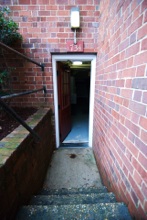Using Rhetorical Media to Meet Outcomes
and Satisfy Stakeholders

Unit 2:
The next unit will emphasize visual rhetoric and conventions more specifically. The reading will emphasizes ways of reading images and understanding visual cues. Students will be asked to make an argument about the use of visuals in a documentary film of their choosing. This assignment will consist of two parts: the students will write their argument and also accompany it with a memorandum that analyzes the rhetorical moves they make to build their argument (with special attention to ethos development).
Unit Goals: In this unit, students will
1.demonstrate knowledge of rhetorical principles,
2.continue practicing critical thinking, reading and writing,
3.continue demonstrating knowledge of writing processes,
4.continue adhering to academic genre conventions.
Goal Justification:
This unit gives specific emphasis to visual argument. This unit asks students to demonstrate knowledge of rhetorical principles and to be able to transfer their understanding those principles from one mode to another (from verbal to visual). This exploration will broaden their understanding of rhetorical conventions and ask that they make their rhetorical choices purposeful. Additionally, this unit challenges them to think critically about the material they observe--deconstructing how an argument is made visually.
Like the previous unit, this one will continue to require traditional academic form, as well as MLA conventions. Students will engage, once more, in all stages of the writing process. In addition to these traditional forms, the assignment asks students to produce a real-world genre, which individuals of the community might require them to produce in circumstances of employment.
Sample Capstone Prompt: Film Analysis Assignment
